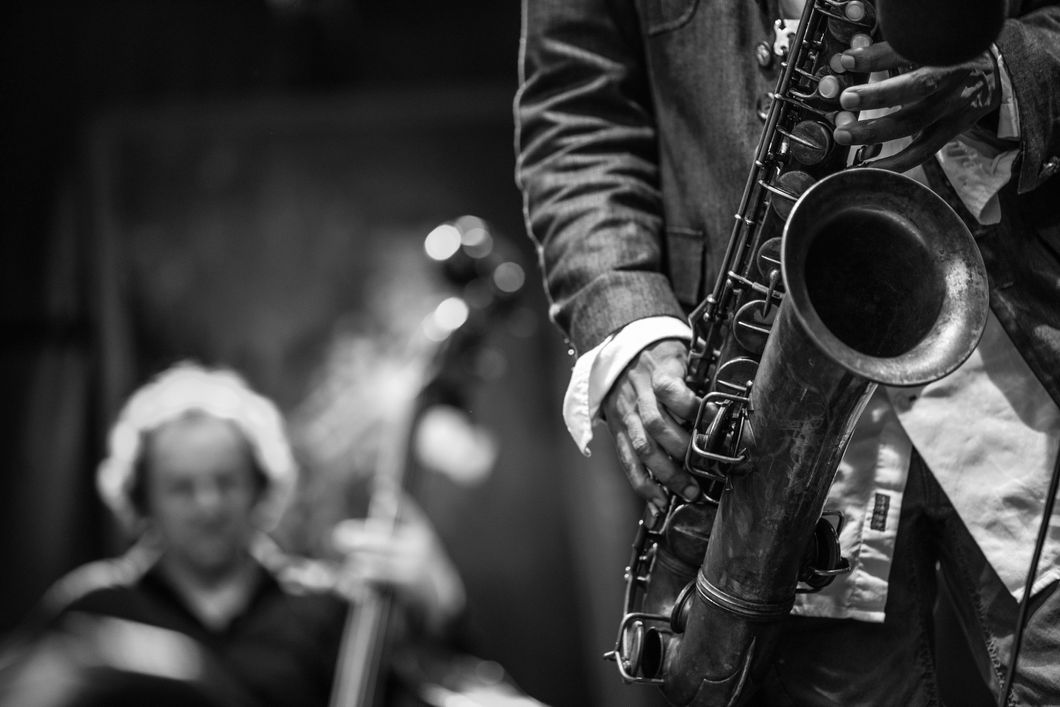As I write this, I'm listening to some of my favorite Benny Goodman/ Glenn Miller/ Duke Ellington/ Ella Fitzgerald-laden playlists. While my adoration for the genre goes back many years, I have lately become especially enamored by the queer history associated with swing music: the poets, the speakeasies, and the resistance. It's no secret that jazz was pioneered by America's minorities and, also considering its important role overseas as the music of liberation and modernity in Germany and the U.S.S.R., was a worldwide cry for and celebration of freedom.
My first historical reading of swing came shortly after my introduction to Beat Generation poetry. I cannot read the writings of Jack Kerouac, American writer, without hearing blares of trumpets in accompaniment. The poet Allen Ginsberg's rhythm is inseparable from the triplet hi-hat beats of the jazz clubs he frequented in Greenwich Village. Of course, not all jazz is created equal--there's the sterile stuff played on Akron's only big band swing station, where glaringly white men sing about apples and bees and pretty, unopinionated ladies--but from there on out, the music is queer. Just as queer as it is censored. I love the "dirty jazz" records that have been immortalized both in vinyl and now online, each with a note in the description mentioning it was banned from the radio but, don't worry, the copies sold well. From the classic "Sing Sing Sing!" of Benny Goodman to the less kosher "My Girl's Pussy" by Harry Roy, my thoughts of swing are inextricable from my thoughts of queer history and queer spaces.
Queer spaces are always adapting, and I feel that what they are now is very different from what they were in the eighties and those were very different from queer spaces in the thirties. "Punks, Bulldaggers, and Welfare Queens," the keystone essay from Cathy J. Cohen, illuminated boundaries of queerness that were new to me. Up until now, "queer" largely refers to sexuality and gender, at least in the mainstream. Cohen introduces the idea of queer as a coalition. This expands the idea of queerness from its current definition into including all who are disadvantaged by the white patriarchal foundations of Western culture. The motive is primarily political--divided, minorities are minorities; however, together, they form a more powerful coalition. The idea of queer as coalition strikes me as productive, but also leaves me feeling conflicted. I support the queer movement. I support the queer coalition. Of course, I support a more effective collaboration of people with aligning ideas. At the same time, what then becomes the signifier for queer sexuality or gender? By broadening the term, what does queer mean in the very practical sense? The idea of initiating straight people, even allied straight people who may be "queer" in other ways, into the label historically used by them in offense strikes me as a betrayal. I still understand queer as referring to a non-cis or non-straight person. I understand that, in that way, we are alike. While the coalition title of "queer" still signifies working for the same cause, I believe the best route to proceed may be with a new term for a new movement.
Returning to the jazz of the forties, give or take, I see the queer coalition here. I see the myriads of ethnically diverse musicians cast out of the mainstream, queer city goers finding refuge in a club, street brass players and drummers, sex workers, and junkies united in a genre and a culture. Though I must admit I'm saddened by the gradual disappearance of gay clubs and queer spaces, I would be thrilled to see places of collaboration and joy and queer coalition if they look anything like these havens of the past. These spaces have been historically necessary for survival. Hopefully, and I do believe we have made great progress, the restoration of queer coalition spaces will have all the joys of dirty jazz without the threat to life that pushed them underground.

















